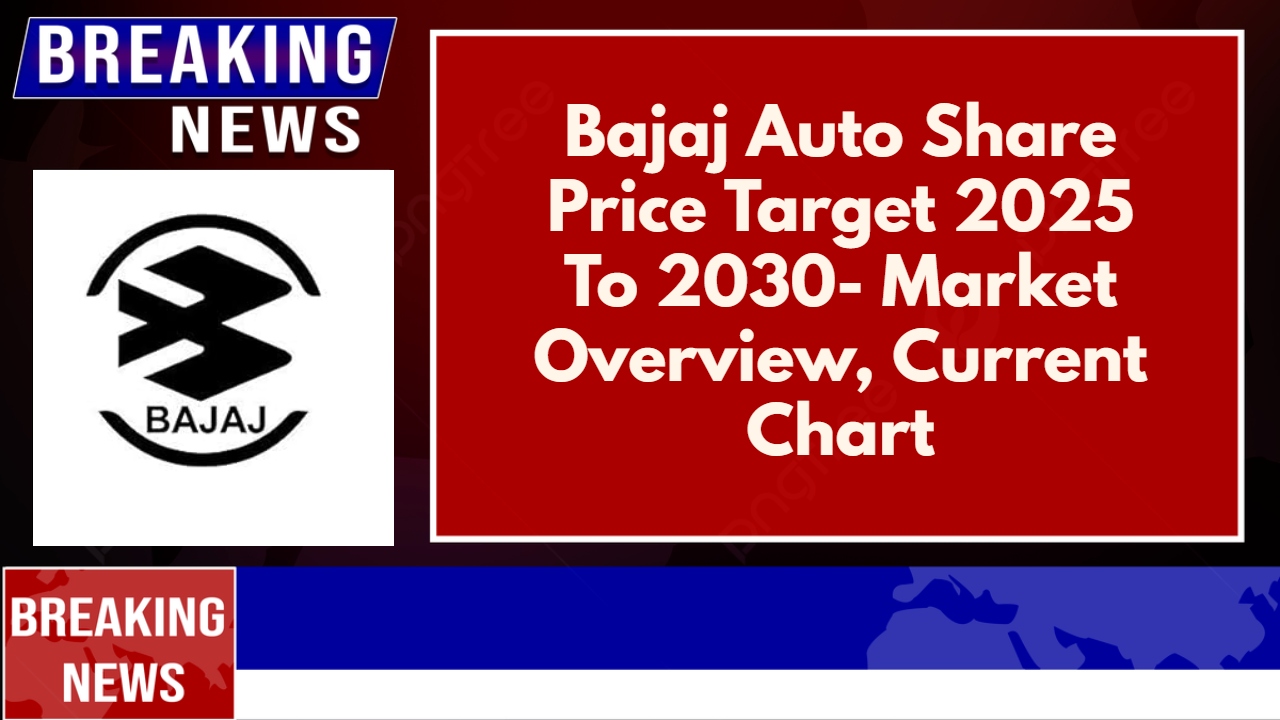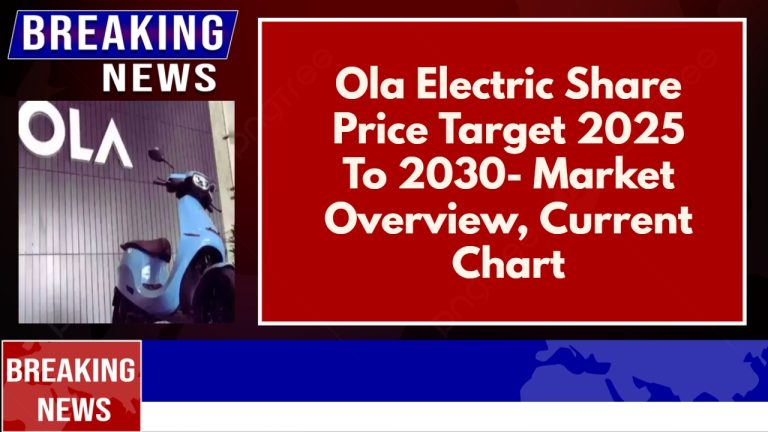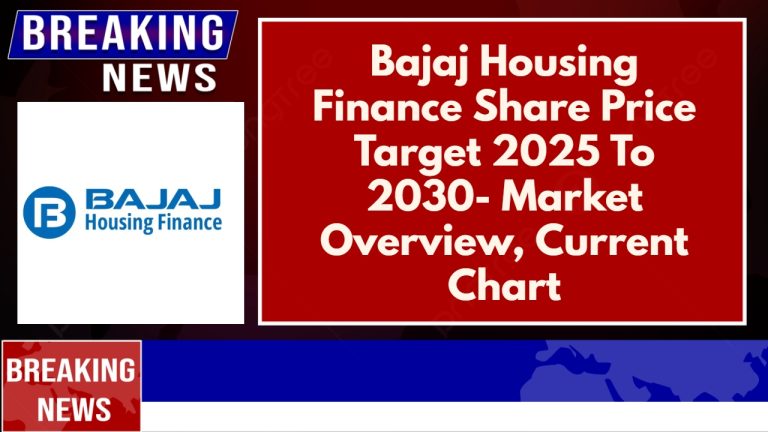Bajaj Auto Share Price Target 2025 To 2030- Market Overview, Current Chart
Bajaj Auto is one of India’s leading two-wheeler and three-wheeler manufacturers, known for its innovative and reliable vehicles. Established in 1945, the company has built a strong reputation both in India and in international markets. Bajaj Auto is famous for its motorcycles, including the Pulsar, Dominar, and Platina series, as well as its popular three-wheelers used for public transport. The company is also making strides in the electric vehicle (EV) segment with its Chetak electric scooter. Bajaj Auto Share Price on NSE as of 18 March 2025 is 7,625.00 INR.
Bajaj Auto Share Price Chart
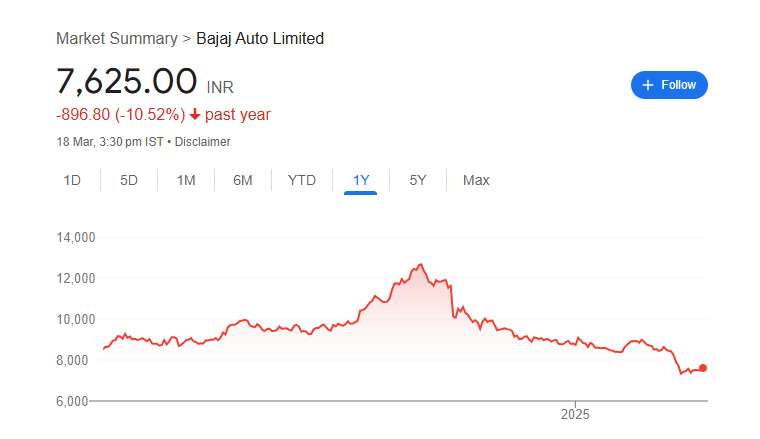
Bajaj Auto Market Overview
- Open: 7,523.40
- High: 7,642.10
- Low: 7,512.85
- Previous Close: 7,486.05
- Volume: 354,990
- Value (Lacs): 27,026.81
- VWAP: 7,579.05
- UC Limit: 8,234.65
- LC Limit: 6,737.45
- 52 Week High: 12,774.00
- 52 Week Low: 7,301.00
- Mkt Cap (Rs. Cr.): 212,609
- Face Value: 10
Bajaj Auto Share Price Target 2025 To 2030
| Bajaj Auto Share Price Target Years | Bajaj Auto Share Price |
| 2025 | ₹12,780 |
| 2026 | ₹13,468 |
| 2027 | ₹13,940 |
| 2028 | ₹14,575 |
| 2029 | ₹15,150 |
| 2030 | ₹15,800 |
Bajaj Auto Share Price Target 2025
Bajaj Auto share price target 2025 Expected target could be ₹12,780. Here are 8 key factors that can influence Bajaj Auto’s share price target by 2025:
-
Growth in Domestic & International Sales – Strong demand for two-wheelers and three-wheelers in India and export markets will be a major driver of revenue and profitability.
-
Electric Vehicle (EV) Expansion – Bajaj Auto’s progress in the EV segment, including the success of its Chetak electric scooter and future EV models, will play a crucial role in its growth.
-
Raw Material Costs & Supply Chain Stability – Fluctuations in the prices of essential materials like steel, aluminum, and lithium (for EVs) can impact production costs and profit margins.
-
New Product Launches & Innovation – The introduction of new motorcycles, scooters, and innovative vehicle technologies can attract customers and strengthen the brand’s market position.
-
Government Policies & Regulations – Policies related to emission norms, subsidies for EVs, and taxation on petrol vehicles will influence Bajaj Auto’s pricing strategy and overall sales.
-
Export Market Performance – Bajaj Auto has a strong presence in global markets, including Africa, Latin America, and Southeast Asia. Any growth or decline in these regions will impact revenue.
-
Competition in the Auto Sector – Rising competition from other two-wheeler brands like Hero MotoCorp, TVS, and emerging EV startups could affect Bajaj Auto’s market share.
-
Economic & Consumer Sentiment – Factors like interest rates, inflation, fuel prices, and overall economic growth will influence consumer purchasing power and demand for vehicles.
Bajaj Auto Share Price Target 2030
Bajaj Auto share price target 2025 Expected target could be ₹15,800. Here are 8 key factors that can influence Bajaj Auto’s share price target by 2030:
-
Electric Vehicle (EV) Dominance – The company’s ability to scale its EV production, expand charging infrastructure, and compete with emerging EV brands will be crucial for long-term growth.
-
Global Expansion & Export Growth – Strengthening its presence in international markets, especially in Africa, Latin America, and Europe, will contribute to revenue diversification and growth.
-
Technology & Innovation – Advancements in smart vehicle technology, fuel efficiency, and automation in manufacturing can enhance product appeal and operational efficiency.
-
Government Policies & Sustainability Regulations – Stricter emission norms, EV subsidies, and changes in taxation policies will significantly impact Bajaj Auto’s strategy and pricing.
-
Diversification into New Mobility Solutions – Growth in segments like electric three-wheelers, hybrid models, and premium motorcycles could open new revenue streams for the company.
-
Raw Material & Production Costs – Managing the cost of essential materials, including lithium for EV batteries and metals for vehicle production, will be critical for maintaining profit margins.
-
Competition from Global & Domestic Players – Increased competition from other EV manufacturers, traditional automakers, and international brands entering the Indian market will shape Bajaj Auto’s market position.
-
Economic Growth & Consumer Demand – A strong Indian and global economy, rising income levels, and increased urbanization will drive demand for two-wheelers and personal mobility solutions.
Bajaj Auto Shareholding Pattern
| Promoters | 55.04% |
| FII | 12.45% |
| DII | 10.06% |
| Public | 22.45% |
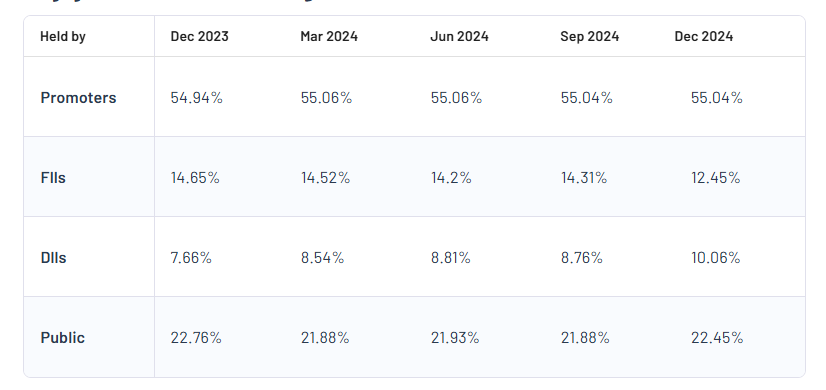
Read Also:- IOC Share Price Target 2025 To 2030- Market Overview, Current Chart

